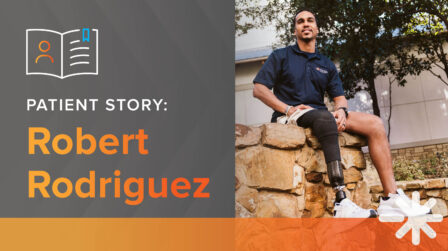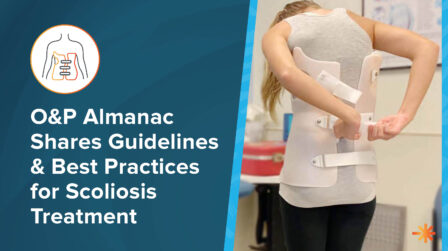Understanding Traumatic Limb Loss
Traumatic limb loss is the loss of a limb from an accident. This could include an injury from a lawnmower, power tool, farm equipment, or a motor vehicle accident. Surgeons have to consider several factors during the initial care.
Treatment
Life-saving measures must first be considered during initial treatment, and then limb-sparing or limb-shaping. The surgical team will decide if multiple surgeries are necessary, and will prepare the limb by preserving as much tissue as possible. Additional surgeries may include wound closure, skin grafts, and/or limb-lengthening or shaping. These procedures are performed with considerations of the patient’s growth, functional goals, and their potential ability to use a prosthesis. The loss of an upper extremity can affect a child’s ability to perform daily tasks such as eating, dressing, and writing. The loss of a lower limb can affect standing, walking, running, and jumping.
Prosthetic Technology
A traumatic limb loss could be a portion of a single finger to the complete loss of an arm or leg. Either way, the child and family will grieve the loss of the limb and the change in body image. Prosthetic rehabilitation can start as soon as the limb is healed. Commonly, a team of doctors, therapists, prosthetist, family, and the patient will work together to create the treatment plan. The goal is to return mobility and the child to as many activities as possible. It is important to maintain communication with your prosthetist and physician as your child grows. Follow up appointments can help to identify any issues that may impact function and comfort in the prosthesis. These issues include bone spurs and neuromas. It is not uncommon to require a revision surgery to remove a bone spur or stop limb growth in the limb to allow for more clearance for specific prosthetic feet. These procedures can provide improved long-term function.
As a child continues to grow, he or she will be refit with a new prosthesis approximately once a year, depending on growth. Prosthetic technology options usually increase as a child moves through adolescence to being an adult. Prosthetic hands can provide more strength and dexterity. Prosthetic legs will provide improved means of shock absorption, stability, and mobility through increased availability to prosthetic components such as microprocessor-controlled hydraulic knees.
Latest Updates
Subscribe to stay up-to-date on our latest posts.



